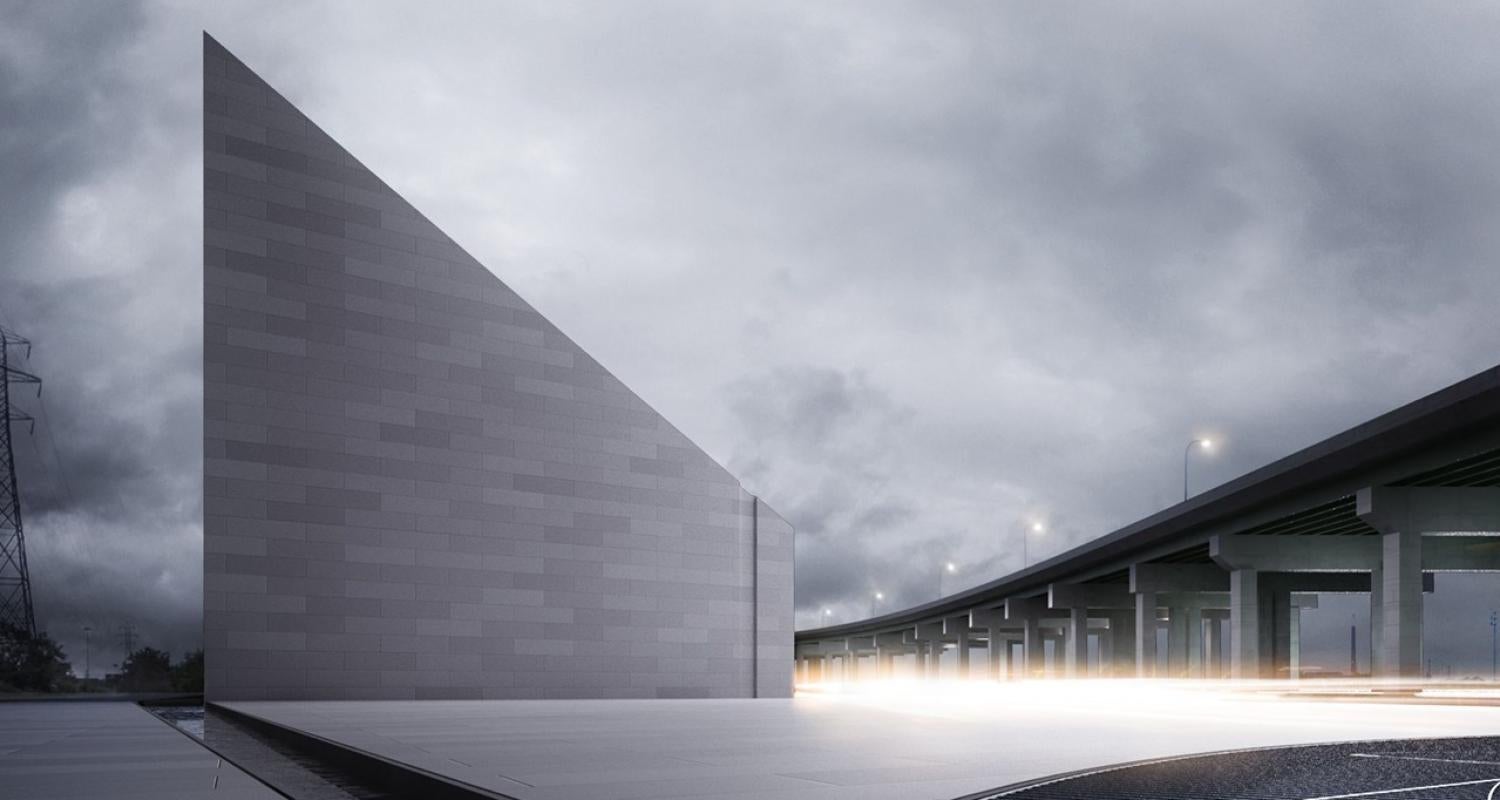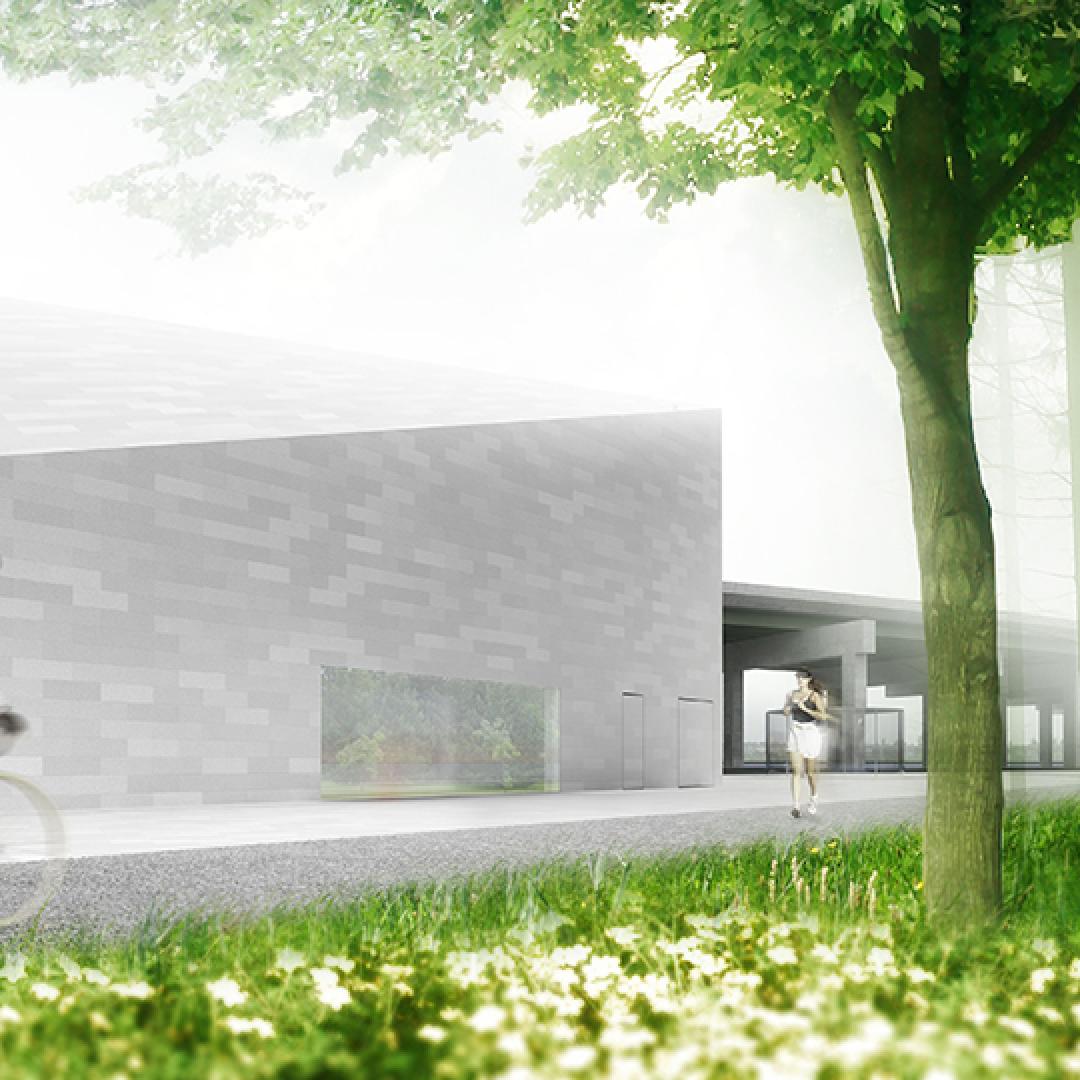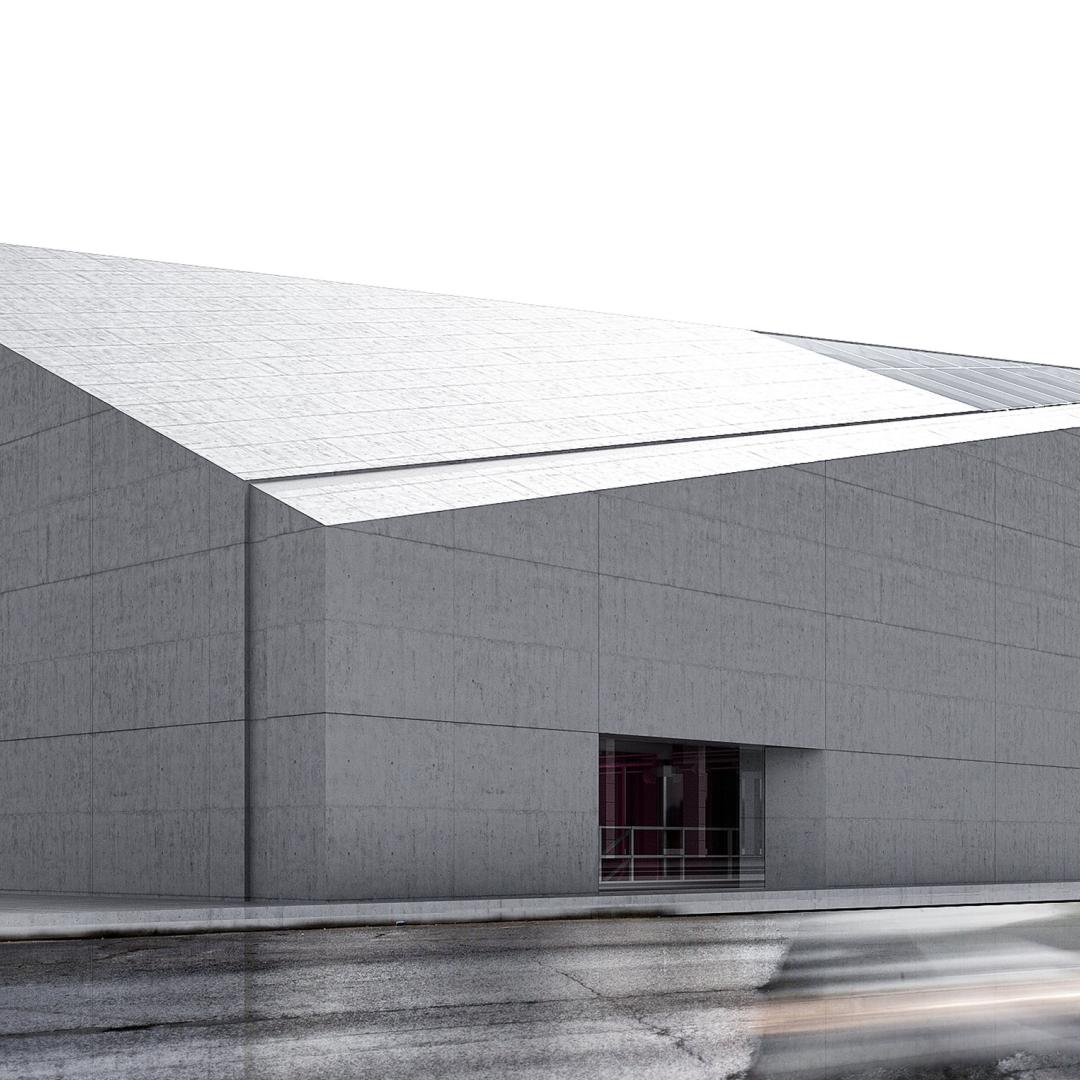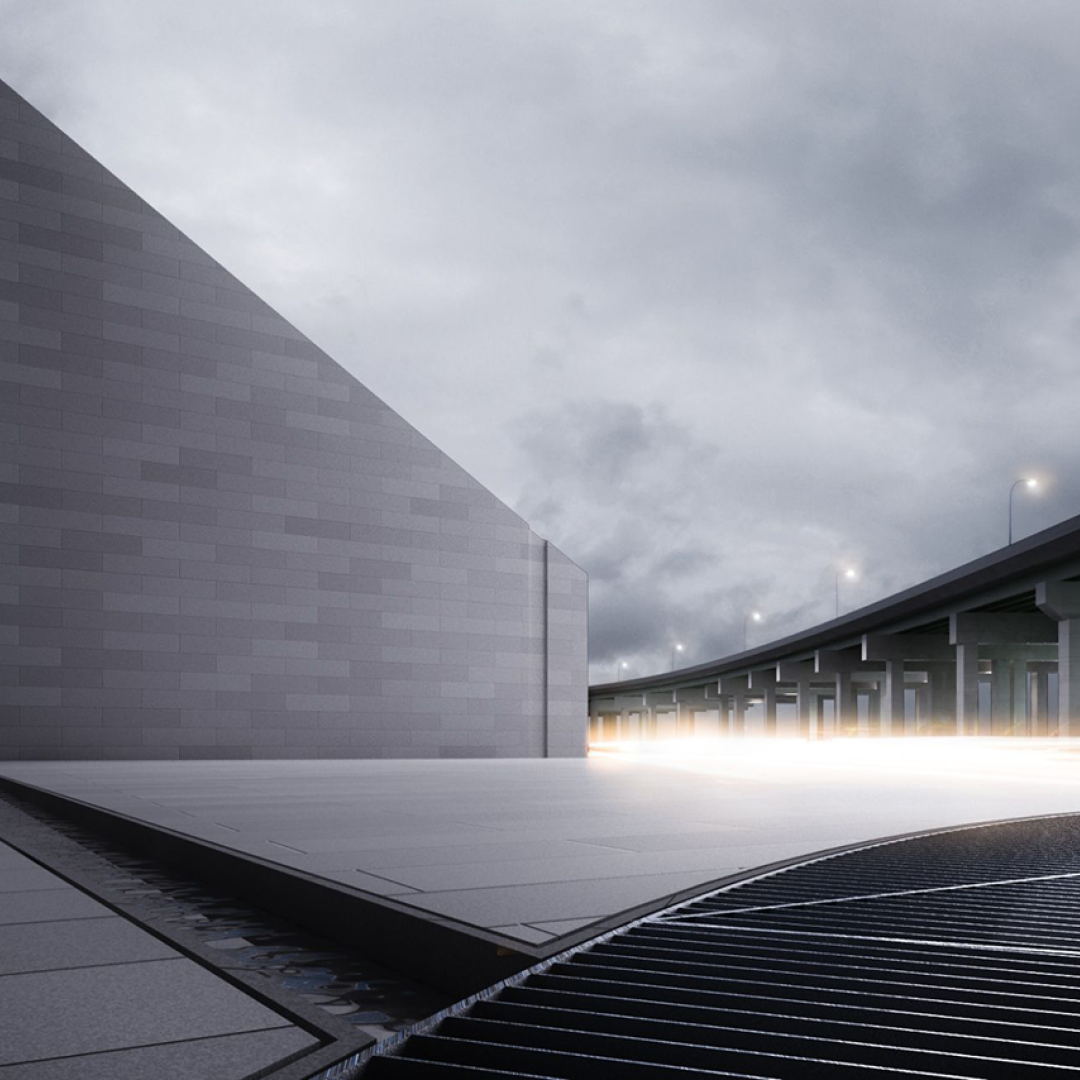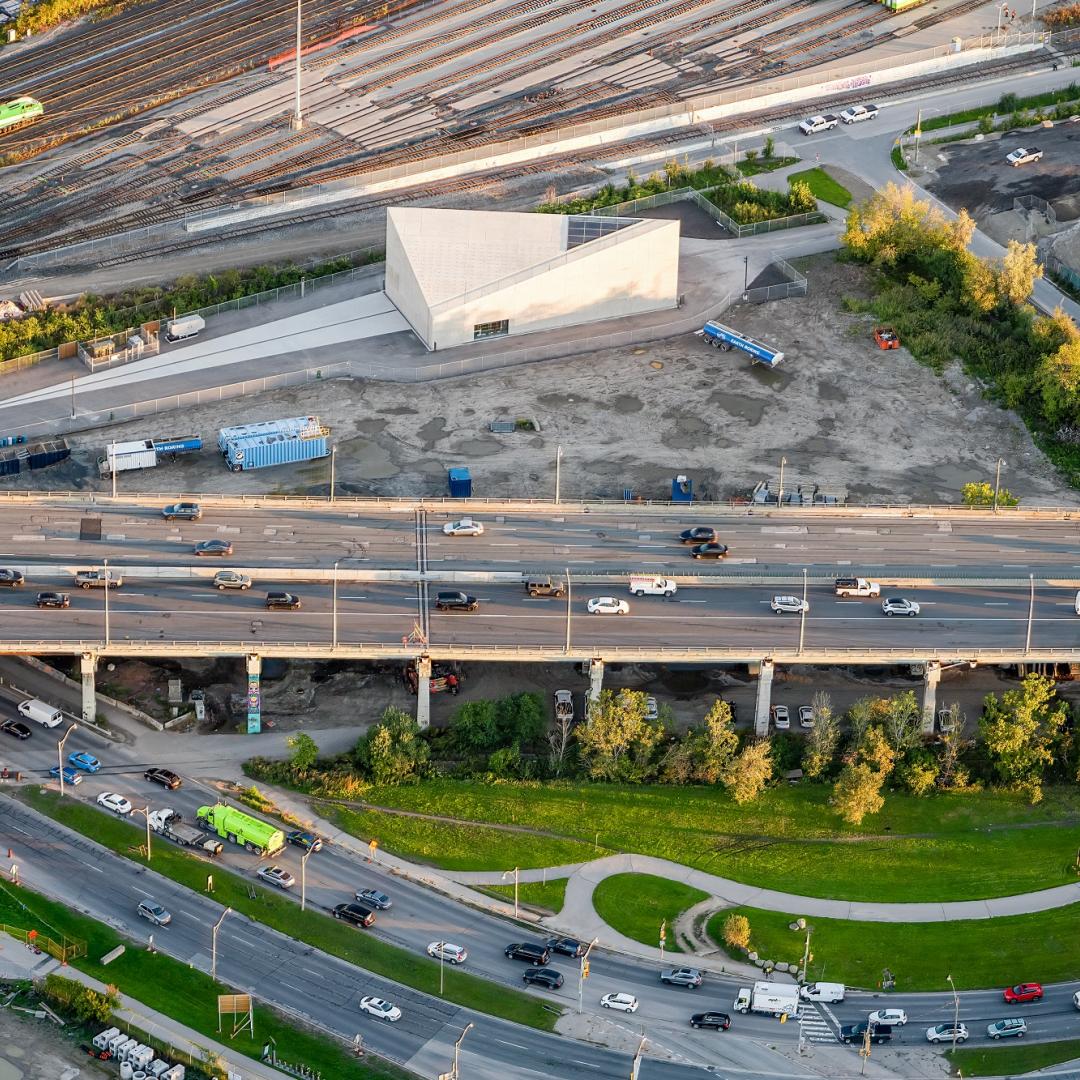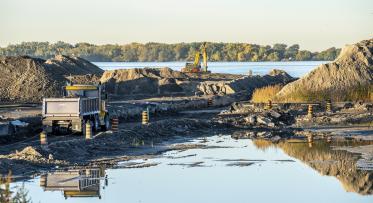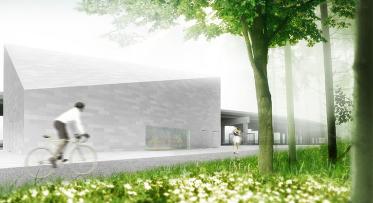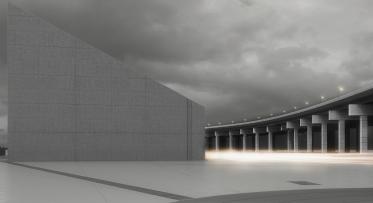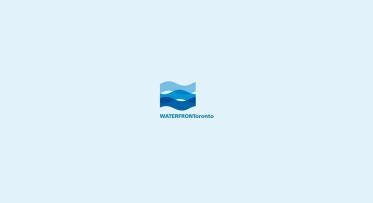Stormwater Treatment System
Treatment facility and main shaft located
at 480 Lake Shore Boulevard East
The innovative stormwater management system integrates pieces across the waterfront with state-of-the-art technology and world-class architecture to prevent flooding and remove pollutants before water is released into the lake.
Although largely hidden from view, managing and treating stormwater is critical to convey runoff, prevent flooding, and to ensure pollutants are removed from the water prior to being discharged into Lake Ontario. Planned in line with our Resilience and Innovation Framework for Sustainability, the Cherry Street stormwater management system addresses both day-to-day stormwater management, as well as extreme weather events, ensuring it will function in challenging conditions to alleviate pressure on our existing systems.
While many stormwater treatment systems combine sewer systems with stormwater overflows, this system is purpose-built to treat stormwater using a combination of several adapted technologies as well as the main shaft as part of the treatment process. Serving East Bayfront, the West Don Lands (including the Canary District) and future communities in the Keating Channel Precinct, the integrated system protects these communities from flooding by safely capturing and conveying stormwater. It also removes pollutants before directing water to the lake, laying the groundwork for a cleaner waterfront and helping new neighbourhoods and communities thrive.
The full stormwater management system includes the Cherry Street Stormwater Management Facility, funded by and built in partnership with the City of Toronto – Toronto Water, a UV treatment facility that directs water through art sculptures at Sherbourne Common, and a series of force mains that collect water from waterfront neighbourhoods and channel it to the treatment infrastructure. Once complete, the final piece of the system, the in-water pipes along the Water’s Edge Promenade in East Bayfront, will expand the area served by the stormwater management system.
Quick Facts
Cherry Street Stormwater Management Facility
A decade in the making, the Cherry Street Stormwater Management Facility became operational in March 2021. The state-of-the-art design addresses a number of constraints posed by its location within a dense, downtown urban setting and the use of the innovative technologies in the multi-step treatment system is the first of its kind in Canada.
The 300-square-metre facility located at the northeast corner of Lake Shore Boulevard and Cherry Street has become a landmark structure in the West Don Lands. the prime consultant (R.V. Anderson Associates Limited) and their architecture subconsultant (gh3) had to address the challenges of the site while meeting Waterfront Toronto’s requirements for design excellence and the project’s modest budget.
Their approach was to design a simple elegant building that brings a modern interpretation to the ancient story of water. The design of the facility enclosure comes from the idea of a stone well, inverted to be displayed as a sculptural form above ground. The building is embellished by etchings on its surface that act as a system of rain channels running from roof to wall, to ground plane and shaft that represent the broader system of urban hydrology in which the structure is rooted.
The facility has attracted several design accolades, including: 1 of 10 Striking Architecture Projects Shaping Design in 2021 from Azure Magazine, one of the “Ten Coolest New Buildings to Gawp at this Year” from the Times of London in 2021, as well as a Canadian Architect Magazine Award of Excellence in 2011.
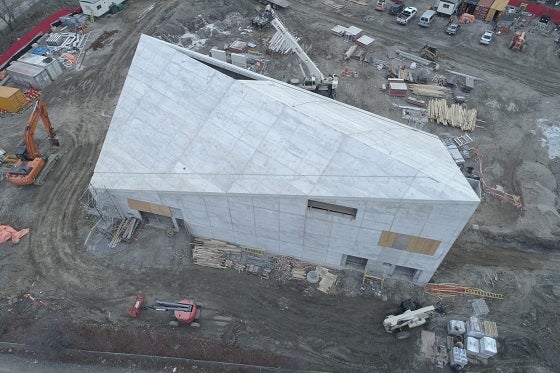
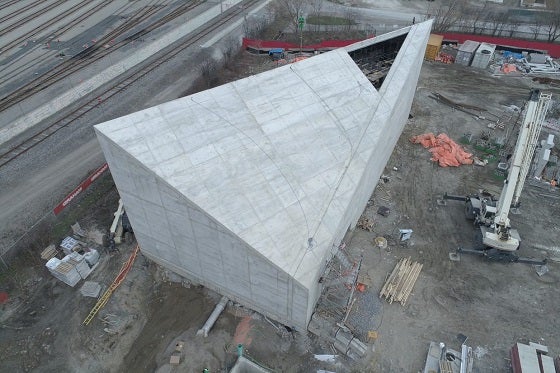
Innovative Treatment Process
To keep contaminants from entering the lake, the Cherry Street Stormwater Management Facility houses an innovative three-step process to treat stormwater created by rain and melting snow. In the first stage of treatment, stormwater is collected and conveyed to a hydro dynamic oil grit separator located on the east side of Cherry Street. The oil grit separator removes sediment, screens debris and separates oil from the stormwater. After leaving the oil grit separator, the stormwater is conveyed to a storage chamber to await the second stage of treatment.
The second stage removes any fine suspended solids not captured by the oil grit separator using ballasted flocculation. Ballasted flocculation is a process that introduces a substance that binds the material together to make it heavier. The weighted material then sinks to the bottom of the chamber where it is isolated from the clarified water. The treated water is then conveyed to the third and final stage of treatment where it is treated using ultraviolet (UV) disinfection.
In the final stage of treatment, UV disinfection uses radiation from UV light to disrupt any organisms/bacteria in the water to deactivate or prevent them from reproducing. Following UV disinfection, the treated water is discharged into Lake Ontario at the Keating Channel. This process achieves the necessary level of water quality without the use of sediment ponds, which enables the facility’s small footprint.
In-Water Pipes
The final piece of the stormwater management system is the in-water pipes currently being installed along the Water’s Edge Promenade in East Bayfront. Once the pipes are connected to the system in 2024, they will convey stormwater from the Dockside area of East Bayfront to the Cherry Street Stormwater Management Facility. In the coming years, our plans include building a boardwalk extension over the pipes, increasing the width of the Water’s Edge Promenade at the foot of Sherbourne Common.
Transforming Infrastructure Into Art
We have taken a holistic approach to this system, integrating projects where possible and incorporating innovation and world class design at every step of the way. The water treated by the facility not only prevent pollutants from entering the lake, but it also serves a rather artful purpose. Approximately 25% of the treated water flows to Sherbourne Common where it runs through the water channel and is then released through nine-metre-high public art sculptures called Light Showers by artist Jill Anholt before entering Lake Ontario. The functional sculptures celebrate the collection and purification of stormwater and that even essential infrastructure can be beautiful.
Sustainable by Design
The innovative treatment system exceeds the stormwater treatment guidelines set out by the City of Toronto, as well as Waterfront Toronto’s broader commitment to protecting and enhancing the natural environment. During construction, environmental effects were minimized by maximizing the extremely tight footprint of the site which reduced the need for above ground space for the facility.
To minimize surface level intrusion in the development area, the tunnel portion of the system was constructed by boring through bedrock deep beneath the soil. Unlike traditional systems that fill in the shaft following construction, the tunnel construction shaft that was built to launch the tunnel boring machine was repurposed as a water storage facility to decrease flows to the stormwater treatment facility. This unique approach reduced the overall size of the system, thereby reducing both the cost to construct and maintain the facility.
West Don Lands Class Environmental Assessment Master Plan Stormwater Quality Revision & East Bayfront Class Environmental Assessment Master Plan Stormwater Quality Revision
The original project scope was for a storm water management facility at 480 Lake Shore Blvd to receive storm runoff and to treat stormwater from the West Don Lands area. It was decided to combine the West Don Lands and East Bayfront stormwater systems, which required opening and amending the related Environmental Assessments. The amendments were completed and the West Don Lands system was expanded to accommodate flows for the West Don Lands, East Bayfront and future communities in the Keating Channel Precinct.
Related Documents:
-
Notice of Filing Addendum - West Don Lands Class EA Master Plan Stormwater Quality Revision (2013)
-
Addendum to West Don Lands Class EA Master Plan for Stormwater Quality (2013)
-
Notice of Filing Addendum - East Bayfront Class EA Master Plan Stormwater Quality Revision (2013)
-
Addendum to East Bayfront Class EA Master Plan for Stormwater Quality (2013)

